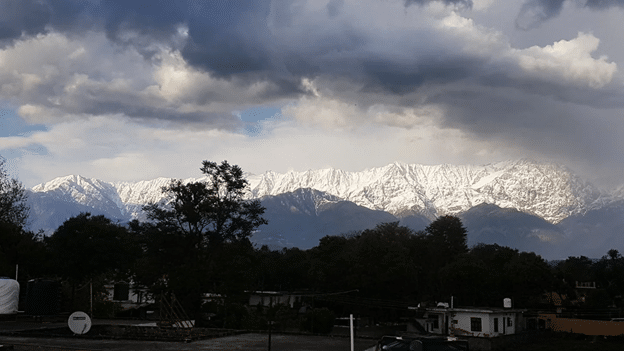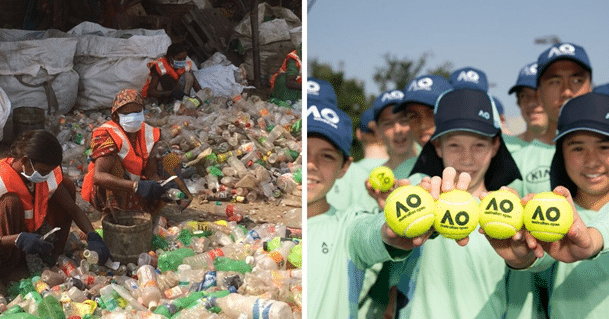‘The coronavirus pandemic has hit the world severely, representing the most severe threat to human health in more than a century. The environment from local to global scales has witnessed apparent positive and negative impacts. Global lockdowns have drastically altered the patterns of energy demand and have caused an economic downturn but at the same time, have provided an upside-cleaner global environment.’*
This pandemic has made us pause, sit still and appreciate our relationship with nature. Our daily routines have changed and connected us to mother nature watching it evolve and restore itself leaving nothing to waste. We are seeing many examples of the ecosystem around us start to repair like the pure waters of the River Ganges in India, sighting the largest number of nests of rare leatherback sea turtles on the beaches of Thailand after two decades and of course seeing the majestic Himalayas for the first time in almost thirty years from a distance as far as 200 kms away in Jalandhar (Punjab), India.

Seeing the majestic Himalayas for the first time in almost thirty years from a distance as far as 200 kms away in Jalandhar Punjab, India.
Design for Reuse
Architect, William McDonough and Chemist, Michael Braungart characterized the concept of eliminating ‘waste’ by integrating design and science that provides enduring benefits for society from safe materials, water and energy in circular economies. This philosophy around ‘eliminating waste’ is highlighted in their book Cradle to Cradle: Remaking the Way We Make Things.
The three principles derived from this philosophy of nature, focus on:
● Everything is a resource for something else.
● Use clean and renewable energy
● Celebrate diversity
“Collaboration, communication and co-creation towards a conscious and responsible tomorrow.” says Fancy George, Workplace Consultant, Workplace and Circular design as a Life centered Solution.

This Tirupur-based company recycled 1,88,708 PET bottles to make 25,000 garments for ball kids and courtside statisticians at the Australian Open 2020.
More recently, British Industrial Designer, Tim Brown of IDEO took this principle a stage further producing the Circular Design Guide in association with the Ellen MacArthur Foundation which notes the opportunity for businesses to design using a ‘restorative and regenerative approach’.
Biomimicry – Learning from Nature
‘After 3.8 billions years of evolution, nature has produced countless animals, plants and microbes that are the engineers of our planet. In a practise called biomimicry—from the Greek bios for “life” and mimesis meaning “to imitate”—curious designers and innovators in many industries have been emulating the time-tested strategies of the other 30 million species on earth. By following biological successes, we have begun to change everything from how we grow food and maintain health to how we package and transport goods. When it comes to creating more sustainable products, processes and systems, Interface takes inspiration from nature’s genius.’*
It is heartening to see a company like Interface whose approach is to design many of its products for the built environment with a climate positive thought in mind. Over 25 years, Interface has observed nature’s regenerative processes to inspire them on this journey, a voyage that has led them to design and manufacture products that are as a standard, Carbon Neutral.
Reimagining, designing and creating products are part of a process. As a community we can do so much more in the global context to shape the future of our Industry.
Spread the word
The ripple effect to adopt sustainable practices cannot just be created with just a few companies or NGOs talking about it, but as individuals we can have an impact on the conversation and learn from businesses that are driving change. Together we can:
- Talk to our professional networks – use your social media to drive the conversation about creating products that can be reused.
- Help change habits within our community – buy recycled or reimagined products, recycle at home, explore alternative energy sources including solar panels to generate electricity.
- As Designers – start with small projects/ just start small. It is not too complicated to reuse and repurpose existing materials and products into reuse especially when we apply logic.
- Peer to peer Inspiration – start with a conversation on these topics among your peer groups and see how that concludes in a solution.
By learning from nature we can turn the idea of designing for reuse into a positive business proposition for us and for others. Together we can extend the ripple effect and drive a positive environmental impact for our future.
References
- *https://www.frontiersin.org/articles/10.3389/fpubh.2020.569353/ful
- https://www.thesun.co.uk/news/11356594/himalayas-visible-india-coronavirus-pollution/
- https://www.weforum.org/agenda/2020/04/deserted-thai-beaches-lure-rare-turtles-to-build-most-nests-in-20-years
- https://www.thebetterindia.com/214603/tamil-nadu-tirupur-plastic-bottle-waste-sustainable-shirt-australian-open-gop94/
- *https://www.interface.com/IN/en-IN/campaign/biophilic-design/Biophilic-Design-Campaign-en_IN#570946931

8 responses to “Observing nature: what has it taught us?”
Great write up Ms.Fancy and i am into renewable energy and architecture.
Would love to connect with u and work on the observations jolted down.
Hi Vivek, thank you for writing to us. Can you please share your contact details at enquiry.india@interface.com so we can do the needful?
Regards
Interface India
The datas and details mentioned in this will contribute to a better understanding of the appropriate direction for design development. Everyone to focus for the development and implementation these ideas.
Hi Jay, glad that you liked the article.
Regards
Interface India
Hey Fancy, Great Article.
Its like a Deja Vu , we know it , we heard it , we practiced as well but reading it all together, penned beautifully..
Kudos
Best Regards
Well said Fancy… each one of us have to start in small ways and add to the butterfly effect. One of the developed countries problem is over consumption and reuse-recycle is the only answer to address that problem.
Having said, when it comes to constructions and designs it’s a long way to go to include recycle-reuse factors , I feel. This industry needs focused measures to get such designs in affordable ways
Great thoughts Fancy. Nature is the ultimate teacher. Perhaps we are poor students who fail to learn.
Nice thoughts and a good writeup. I liked the reference to the book Cradle to Cradle which I have vouched myself to read. The three principles derived from this philosophy of nature, focus on:
● Everything is a resource for something else.
● Use clean and renewable energy
● Celebrate diversity
Biomimicry is an interesting concept where human problems are solved through designs inspired by nature. Interesting bringing solutions available in nature to office spaces. Being a microcosm of nature people when they work in Biomimicked environment I bet would sub-consciously feel the design as part of themselves.
Interesting read and as it finishes nudges the reader to know more about the subject.
Good work Fancy. Keep it up